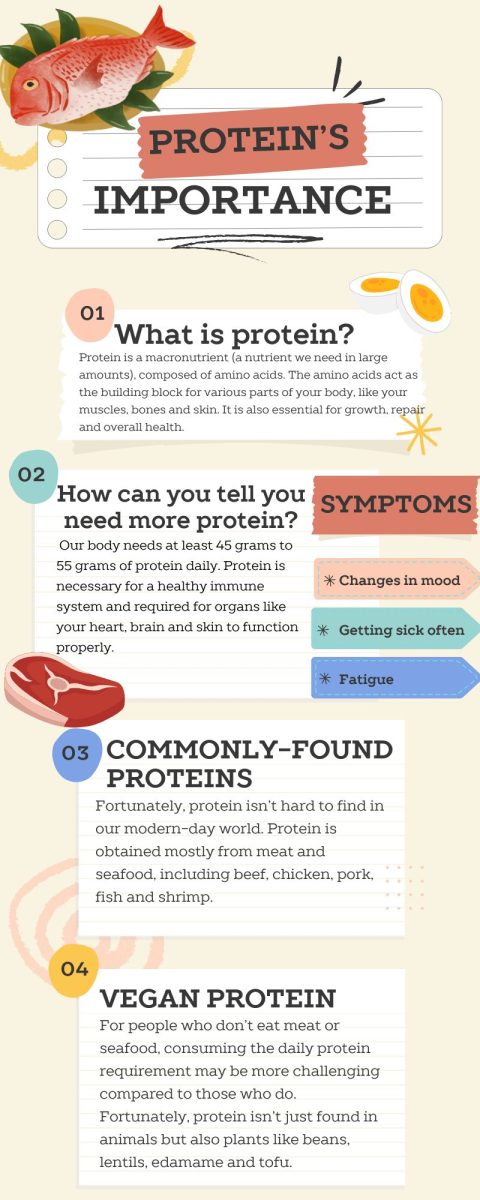Music and how it affects us
Music is all around us in our daily lives, even if we aren’t aware of it. It may be heard at restaurants, hair salons, on the street, and especially when we listen to music voluntarily. Nonetheless, music can cause certain responses in our brains. Music may affect our brains, offering advantages or helping with specific aspects of our life. Exploring these effects can benefit us in our everyday lives.

To understand how we can use music to benefit us, learning which parts of our brains are active when listening to music is important. First, music travels to our cerebral cortex. Next, our auditory cortex, located in the temporal lobe, processes parts of music such as the tone, pitch or melody.
Associate professor of psychology at Chaminade University, Darren Iwamoto, says “Sound waves are converted into electrical signals that our brains interpret as rhythm, melody and harmony.” This explains why the auditory cortex is important for processing the base part of music.
That is not the only part of our brain that is being used when we listen to music. As we listen to music, we take note of the beat and melody. However, when the pattern we hear changes such as a beat or perhaps an octave change, the examination of this change is processed in the prefrontal cortex.
Our brain does not only process the pitch or melody of a song, but it also creates emotional responses. Iwamoto explains “music can also affect the cerebellum and release neurotransmitters like dopamine, which are linked to pleasure and motivation.” Music not only affects our brain but it also affects us physically, such as our breathing or heart rate. Music can also affect our emotions. A song can trigger our limbic system which is connected to emotions and memories. Because our limbic system is active when listening to music, it can bring up emotions of happiness, sadness or even calmness. Since the limbic system is also connected to our memories, a song can bring back memories or connect a certain song to an emotion.
In an article by the student-run website the Celtic Conversation, it explains how music affects us. This is proven through the Mozart Effect, a study done in 1993 said that listening to classical music could make children smarter. We can also see how music affects us as it can release dopamine, a neurotransmitter that is associated with pleasure, in our brains.
“Music is amazing because it affects our brain and mood in so many different ways due to its ability to evoke emotions, trigger memories, release dopamine and influence our physical state,” Iwamoto said.
We can use how music affects us to our advantage. Jazz music, which can be soothing, helps to destress. Upbeat music or even EDM music releases endorphins which makes us happy and it can be an energizer as well. Pop and rap music, while not good for focusing or concentration, boosts energy and can be used as exercise music as it gets you wanting to move because of the high tempo. Country music can evoke feelings of joy or lighten your mood. Classical music can help with recall but also to calm down.
In an article by The Kennedy Center, an example of how classical music can be used to calm down is shown. “Mozart and Beethoven, those are my favorites,” Bosh said in an interview. “After the game, when…it’s time to chill, I’ll probably throw that on.”
Iwamoto provides explanations for how different genres of music affect our bodies physically. Heavy metal can quicken our heart rate and breathing rate due to its fast pace. Music with a fast tempo is similar to the effects of metal music, as it can increase our breathing and heart rate as well. Slow and calming instrumental music, without words, can be beneficial to help you concentrate and also to reduce anxiety as it slows your heart rate and breathing rate.
Iwamoto also explains, “Classical music increases brain activity in spatial reasoning and language processing areas, for instance.”
In addition to knowing which genres of music can be helpful in different situations, creating different playlists can also be helpful. Creating a playlist of instrumental or classical music can be used when you need to concentrate on something such as homework. When exercising, using a playlist of upbeat music can be helpful as it gets you wanting to move.
Iwamoto says, “This is why we may choose music based on our mood or activity, such as to focus or relax.”
Music is already a part of our lives and by knowing how it affects our brains and bodies can be helpful to us in our everyday lives.
“In short, if we know how music affects our brains, we can use it to our advantage to help us concentrate and get motivated. We can use music to boost our productivity and mood by choosing songs with the right tempo and emotional associations and making playlists that match our mood or activity,” Iwamoto said.

Anna is a third-year Journalism student and a senior at the Academy. She is also the Social Media Editor. This year, as a student reporter, she hopes to...































Abigail Walker • Apr 18, 2023 at 2:19 pm
Wonderful job Anna! I love everything that you’ve noted in your article and I think this is a great pair article with the article on the 5 best songs/types to include in a mental health playlist and why. So cool to see how something as simple as music can do so much!